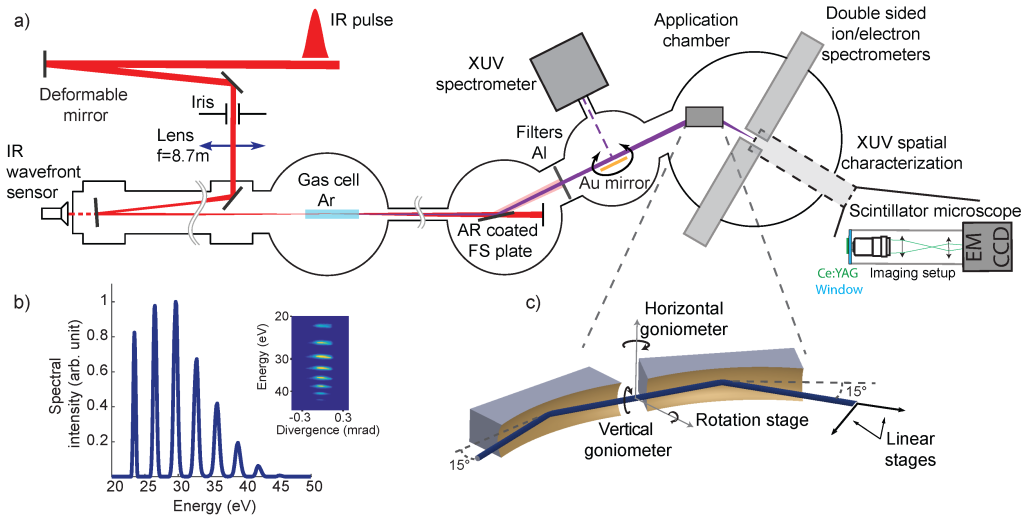The Ultimate Toroidal Mirror: Unleashing Limitless Reflection Potential!
Toroidal Mirror: A Comprehensive Overview
Introduction
Welcome, Good Peoples! In this article, we will dive into the fascinating world of toroidal mirrors. If you are curious about the purpose, construction, and advantages of these mirrors, you have come to the right place. Join us as we explore the intricate details of toroidal mirrors and discover their significance in various fields.
3 Picture Gallery: The Ultimate Toroidal Mirror: Unleashing Limitless Reflection Potential!



Now, let’s begin our journey into the realm of toroidal mirrors.
What is a Toroidal Mirror? 🌟

Image Source: mdpi.com
A toroidal mirror is a type of mirror with a unique curved shape. Unlike traditional spherical mirrors, toroidal mirrors have a surface that is formed by rotating a section of a torus, also known as a doughnut shape, around its axis. This results in a mirror with two different radii of curvature in different directions, creating a complex surface geometry.
These mirrors are commonly used in optical instruments, such as telescopes, microscopes, and lasers, to correct aberrations and improve image quality. Their design allows for better focusing and reduction of distortions, making them indispensable tools in various scientific and industrial applications.
Who Uses Toroidal Mirrors? 🧑🔬👩🔬

Image Source: esrf.fr
Toroidal mirrors are utilized by a diverse range of professionals, including scientists, researchers, engineers, and astronomers. Their unique optical properties make them valuable in fields such as astronomy, microscopy, spectroscopy, and laser technology.
Scientists rely on toroidal mirrors to capture high-resolution images of celestial objects, while microscopists benefit from their ability to produce clearer and more detailed microscopic images. Engineers utilize toroidal mirrors in laser systems to optimize beam quality and achieve precise focusing.
When Was the Toroidal Mirror Invented? 📅

Image Source: mdpi-res.com
The concept of toroidal mirrors emerged in the early 20th century. However, it was not until the advancements in computer-aided design and manufacturing that their practical implementation became widespread. With the aid of modern technology, the production of toroidal mirrors has become more precise and efficient, leading to their increased usage in recent years.
Where are Toroidal Mirrors Used? 🌍
Toroidal mirrors find application in various industries and research institutions worldwide. They are commonly found in astronomical observatories, laboratories, medical facilities, and manufacturing plants. From exploring the cosmos to examining microscopic organisms, toroidal mirrors play a crucial role in advancing our understanding of the universe and facilitating scientific discoveries.
Why Choose Toroidal Mirrors? 🤔
There are several reasons why toroidal mirrors are preferred over other types of mirrors:
Aberration Correction: Toroidal mirrors effectively correct optical aberrations, ensuring high-quality images with minimal distortion.
Compact Design: Due to their unique shape, toroidal mirrors allow for more compact optical systems, saving space in various applications.
Improved Focusing: The dual radii of curvature in toroidal mirrors enable better focusing capabilities, leading to sharper and clearer images.
Reduced Spherical Aberration: Unlike spherical mirrors, toroidal mirrors minimize spherical aberration, resulting in enhanced image resolution.
Versatility: Toroidal mirrors can be customized to meet specific optical requirements, making them versatile for different applications.
Disadvantages of Toroidal Mirrors 😕
While toroidal mirrors offer numerous advantages, it is essential to consider their limitations:
Complex Manufacturing: The production of toroidal mirrors requires advanced manufacturing techniques and precise calculations, making them more challenging and costly to manufacture compared to spherical mirrors.
Alignment Sensitivity: Due to their complex curvature, toroidal mirrors may require precise alignment for optimal performance, increasing the complexity of optical systems.
Limited Field of View: In some cases, toroidal mirrors may have a limited field of view, restricting the range of observation or imaging.
Specific Applications: While toroidal mirrors excel in certain applications, they may not be suitable for all optical systems or imaging requirements.
Specialized Knowledge: Designing and utilizing toroidal mirrors effectively requires a certain level of expertise and understanding of optical principles.
Frequently Asked Questions (FAQs) ❓
1. Can toroidal mirrors be used in space telescopes?
Absolutely! Toroidal mirrors have been successfully implemented in space telescopes to capture breathtaking images of distant galaxies and celestial phenomena.
2. Are toroidal mirrors only used in scientific research?
No, toroidal mirrors have found applications beyond scientific research. They are utilized in various industries, including telecommunications, defense, and manufacturing.
3. Can toroidal mirrors be used in eyeglasses?
While toroidal mirrors are not commonly used in eyeglasses, their optical properties can be applied in the design of specialized corrective lenses for certain visual conditions.
4. How are toroidal mirrors different from parabolic mirrors?
Toroidal mirrors have a more complex surface geometry compared to parabolic mirrors. While parabolic mirrors focus parallel rays to a single point, toroidal mirrors correct for additional aberrations and offer a wider field of view.
5. Do toroidal mirrors require special maintenance?
In general, toroidal mirrors do not require extensive maintenance. However, regular cleaning and protection from scratches or contaminants are recommended to ensure optimal performance.
Conclusion: Embrace the Versatility of Toroidal Mirrors ✨
To sum up, toroidal mirrors are revolutionary optical devices that have transformed various scientific and industrial fields. Their unique design, ability to correct aberrations, and versatility make them indispensable tools in astronomy, microscopy, laser systems, and beyond.
Whether you are an astronomer aiming to unravel the mysteries of the universe, a researcher seeking detailed microscopic images, or an engineer developing cutting-edge technology, toroidal mirrors offer an unparalleled optical solution. Embrace the possibilities they offer and unlock new dimensions of discovery and innovation.
Final Remarks
As we conclude this comprehensive exploration of toroidal mirrors, it is important to note that the information provided here serves as a general overview. The field of optics is vast and continually evolving, so further research and consultation with experts are recommended for specific applications and requirements.
We hope this article has shed light on the significance of toroidal mirrors and inspired you to delve deeper into the fascinating realm of optics. Happy exploring!
This post topic: Mirror


